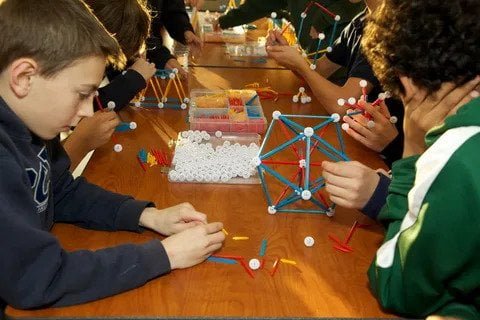Getting children exciting about science and technology is easy because they are curious and want to discover and understand the world. We ask what else is important in early childhood STEM education.
All children like to experiment, and playfully try to understand their environment and everyday phenomena. Why does the balloon fly? Where does the rain come from? Why does the stone sink in the water, but the stick does not? How can this curiosity be kept alive and perhaps even steered into paths that lead to a lasting enthusiasm for science and technology?
The federal government invests in children’s STEM education
This is not only a concern of many parents but a defined education offensive of the federal government. braun thermoscan 5 vs 7 according to the figures, the so-called STEM subjects (short for mathematics, computer science, natural sciences, and technology) are still popular in kindergarten and primary school, but many children usually lose interest in them at the age of 14.
The Federal Ministry of Education and Research is funding STEM education in various areas with 55 million euros until 2022. One project is the “House of Little Researchers”.
Since 2008, the focus has been on the further training of specialists and teachers, because interest in STEM topics is to be awakened and promoted, especially in kindergarten and primary school.
We spoke to Anne Großkurth, who is a consultant for STEM education at the “House of Little Researchers” and has recently further developed the pedagogical approach to early childhood STEM education.
Ms. Großkurth, how can children be actively inspired by technical or mathematical subjects?
Anne Großkurth: I think it is very important to pick up the children where they are in their development and knowledge. Mathematical, technical, and scientific things surround us every day, and are part of our world. How scientists in these subjects proceed later is often similar to the procedures that even young children use, i.e. that they discover, explore and try things out. I think we can start well with the natural curiosity of the children.
In concrete terms, this means that educators, teachers, or parents should first look at what the children are currently interested in and take it up and support it.
Many museums such as the Deutsches Museum in Munich or the Technisches Museum in Berlin have areas where children can try things out and thus get to know physical laws such as leverage and the like better. Is this a good approach to bring these issues closer to children?
Yes, after the first PISA shock, many such areas were developed, whereby complex scientific contexts were often assumed and a more school-based approach prevails. In the last 10 to 15 years, on the other hand, we have been able to bring the STEM topic together with an early childhood approach:
How children see the world:
How do children discover the world, how do children appropriate the world? This is what is new about our revised educational program in the “House of Little Researchers”, which we are also constantly developing.
Basically, our approach is: You first have to have an appreciation for what the child is doing, encourage the children, and allow their own way to discover certain things. As a next step, I can orient myself to the children, perhaps direct them in a certain direction.
If, for example, they are interested in ants, this can be taken up with questions: Why does the ant run away? Does it always run away? Only at the end of this process is it about stimulating the actual learning. We adults can promote this through good dialogues. So I learn together with the children.
The approach of co-construction is very important to us, that we negotiate knowledge and meanings together. This means that as an educator or as a parent, I do not have to know everything, but rather we explore it together with the children.
Train specialists to create more STEM offers in kindergarten
Often there is a lack of practical relevance in school lessons, which could make subjects such as physics or chemistry more attractive. A lot of knowledge transfer simply happens when solving abstract tasks on paper. Here, too, you intervene with further training for educators, so that the teaching in the STEM subjects becomes more vivid, right?
Yes, this is one of the core topics of the foundation. The further training of pedagogical specialists and teachers for three- to ten-year-old children. First of all, it is about the joy of discovering and researching. And also about awakening the self-efficacy (“I can do that too”) in the specialists. After all, those who have chosen the profession of educator may not have been so interested in mathematics or physics at school.
We get the professionals to discover: I can do this, I can explore things. Because being physically on the road simply means perceiving phenomena, exploring them, perhaps finding questions, and pursuing these questions in research, i.e. recognizing. Why is this so? and: Is that always the case? With a view to situations and tools, we teach how to encourage children to delve deeper into mathematical,, technical or scientific thinking and acting.
How do you get the specialists this far?
By teaching them how to put on STEM glasses for themselves. For example, what can I work with if I want to do something about light-color-vision? It is very important that the children get the time to explore things.
So when I do something about electricity, the children are first allowed to explore all the cables and batteries. Then we answer their questions about the object together. And finally, you can accompany what the children want to find out and how with the help of these objects.
However, in some kindergartens and in preschool lessons, little is still taking place in the field of STEM education. Are you already intervening to make these subjects more popular?
This is exactly the area we want to promote. We want to allow the discovery of the children and make it possible that there may also be a material buffet with things on a topic and the educator then slowly comes to research with the group.
For example, if I have a spring, I would first answer all the questions about it and then consider together with the children: How quickly does a feather fall? Do all feathers fall quickly? The ideal in such a situation is to answer a commonly found question with the children.
Specialists are needed for this:
Even computer science can already integrate into everyday kindergarten life, for example by trying to optimize a daily routine. The common tablecloth could be seen as computer science education, if you pay attention to how you could do it faster, perhaps by forming a chain or taking the shortest paths.
What does that look like in concrete terms: Do you provide material or does a specialist of yours go to the kindergarten with the pedagogue and show how this can design?
This is constantly evolving. At the moment, there are mainly digital training courses. These offers are accompanied by material packages with ideas for practice. In recent years, we have also developed programs.
That take up individual situations in day-to-day kindergarten life. For example, there is a subject with impulse questions that helps the specialist to stimulate scientific. Or STEM thinking in children, i.e. observe things, look for explanations, draw up theses and review them.
What is the learning objective for the children here?
It leads to a maturity that allows us to participate in social debates later as adults or adolescents. But for this we have to understand how knowledge is create in these subjects and also that you can acquire this knowledge yourself.
There is always the question? How can I determine and check something and how can I show these findings to others later? Research is part of the learning goal for slightly older children. How do I know this, has anyone ever tried this, what material is already available for this?
We now have some offers for this as well and are further developing this approach. It then goes in the direction of future education and especially STEM education for sustainable development.
Our vision is that we need strong children for a future with challenges. The megatrends such as climate change, digitization, migration are here.And skills such as problem solving, critical thinking, but also empathy, change of perspective. Self-competences and resilience play an important role.
Is digital education already taking effect in the kindergarten, do you encourage educators to integrate it?
Yes, braun thermoscan specification because the world that surrounds us has analog and digital phenomena. We advocate the use of digital media when it makes sense and is not just for entertainment. For example: I can take a photo with the tablet and document how a butterfly develops.
But understanding computer science and computer systems is also exciting, i.e. the task. How can I optimize a process or improve a process? In this way, children can later better assess what a robot is or how artificial intelligence works. It helps if the sensible use of digital technology is already tested in kindergarten or primary school.
How do you deal with the gender issue? Is there actually a greater interest of boys in STEM subjects?
No, I don’t think so. Girls need to tackle stereotypes more. At least that’s what the latest findings on the role of gender in educational processes say. It’s not that a girl who wants to become an astronaut wouldn’t trust herself to do so. But rather that she has to fight against gender roles.
Do you also look away from other countries, for example, the Nordic neighbors such as Denmark, Sweden, or Norway?
Yes, we look, for example, at how global learning works in Sweden or integration in Denmark. There are also many good ideas for STEM education in Asian countries. But we also experience that many countries are now looking to us. Because we are a positive example of early STEM education. Can online education replace offline education?


